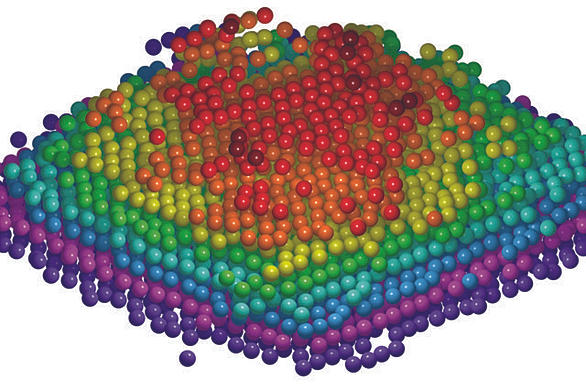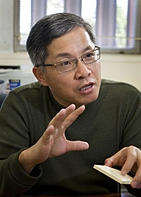The experiment inspired theorists; future ones could reveal new physics.
A physics experiment performed at the National Institute of Standards and Technology (NIST) has enhanced scientists’ understanding of how free neutrons decay into other particles. The work provides the first measurement of the energy spectrum of photons, or particles of light, that are released in the otherwise extensively measured process known as neutron beta decay. The details of this decay process are important because, for example, they help to explain the observed amounts of hydrogen and other light atoms created just after the Big Bang.
Published in Physical Review Letters, the findings confirm physicists’ big-picture understanding of the way particles and forces work together in the universe—an understanding known as the Standard Model. The work has stimulated new theoretical activity in quantum electrodynamics (QED), the modern theory of how matter interacts with light. The team’s approach could also help search for new physics that lies beyond the Standard Model.
Neutrons are well known as one of the three kinds of particles that form atoms. Present in all atoms except the most common form of hydrogen, neutrons together with protons form the atomic nucleus. However, “free” neutrons not bound within a nucleus decay in about 15 minutes on average. Most frequently, a neutron transforms through the beta decay process into a proton, an electron, a photon, and the antimatter version of the neutrino, an abundant but elusive particle that rarely interacts with matter.
The photons from beta decay are what the research team wanted to explore. These photons have a range of possible energies predicted by QED, which has worked very well as a theory for decades. But no one had actually checked this aspect of QED with high precision.
“We weren’t expecting to see anything unusual,” said NIST physicist Jeff Nico, “but we wanted to test QED’s predictions very precisely in a way no one has done before.”
Nico and his colleagues, who represent nine research institutions, performed their measurements at the NIST Center for Neutron Research (NCNR). It produces an intense beam of slow-moving neutrons whose photon emissions can be detected with the same setup used for earlier precision measurements of the neutron’s lifetime.
The team measured two aspects of neutron decay: the energy spectrum of the photons, and also its branching ratio, which can provide information on how frequently the decays were accompanied by photons above a specific energy. The results of this effort gave them a branching ratio measurement more than twice as accurate as the previous value, and the first measurement of the energy spectrum.
“Everything we found was consistent with the predominant QED calculations,” Nico said. “We got quite a good match with theory on the energy spectrum, and we reduced the uncertainty in the branching ratio.”
According to Nico, the results provided specific information that theoretical physicists are already using to further develop QED to provide more detailed descriptions of neutron beta decay.
The results serve as a needed check on the Standard Model, said Nico, and validates the team’s experimental approach as a way to go beyond it. With better detectors, the approach could be used to search for so-called “right-handed” neutrinos, which have not yet been detected in nature, and potential time-reversal symmetry violations, which could explain why there is much more matter than antimatter in the universe.
Paper: M.J. Bales, R. Alarcon, C.D. Bass, E.J. Beise, H. Breuer, J. Byrne, T.E. Chupp, K.J. Coakley, R.L. Cooper, M.S. Dewey, S. Gardner, T.R. Gentile, D. He, H.P. Mumm, J.S. Nico, B. O'Neill, A.K. Thompson and F.E. Wietfeldt (RDK II Collaboration). Precision measurement of the radiative beta decay of the free neutron. Physical Review Letters. June 14, 2016, DOI: 10.1103/PhysRevLett.116.242501




